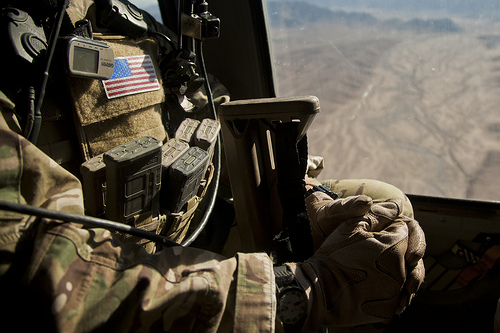
With dozens of treaty allies and a strategic priority of promoting the sovereignty of weak states, the US military has been gradually shifting from a force designed for confrontation to one intended to promote international cooperation.
To be sure, the US military retains a technical and doctrinal advantage as a warfighting entity. Over the last decade, with a $600-plus billion annual defense budget, the military has been able to fight in Iraq, Afghanistan, and Libya, while incorporating new organizations, doctrine, and training to prevent war through security force assistance, which shifts focus to weak states where sub-national (e.g. gangs in Central America) and trans-national (e.g. al-Qa’ida) security challenges jeopardize sovereignty and regional stability. With small numbers of US forces, countries such as the Philippines, Georgia, Colombia, Uganda, and Pakistan gained training and equipment to combat challenges that threaten their own stability.
As the wars wind down and defense budgets are debated, the focus on security force assistance has revived concerns about the “militarization of US foreign policy,” which began in the 1990s with the recognition that combatant commanders are as much policy entrepreneurs as they are war fighters. Generals like Tony Zinni and Wesley Clark epitomized the new breed of warrior-diplomat who directly engaged with foreign heads of state. Far from rogue generals, these military leaders were directed by President Bill Clinton to engage with the world and promote security by assisting partners and assuring allies in a security environment freed from the Cold War dynamic. In practice, the US could support its commitment to a stable Balkans through other countries, limiting its footprint to under 15 percent of foreign forces deployed.
Presidents George W. Bush and Barack Obama continued the practice of using the military to assist governments all around the world. As administrations from both parties came to value the military’s capabilities in peace and war, some contended that defense overshadowed (if not displaced) traditional diplomacy and development efforts. Within defense circles, critics assumed that helping weak states jeopardized American military dominance and undercut preparations for major war. More recently, critics argue that, in an era of declining budgets, the United States military cannot afford nor overcome unintended consequences of attempting to be a “global force for good.”
These are valid concerns, but the United States shows no signs of retreating from a global leadership role. To that end, it seeks partnerships as a key component of US strategy. In the era of declining defense budgets, enabling partners through security force assistance is a sure way to retain influence and limit US deployments.
With shared challenges of terrorism and nuclear proliferation, and shared goals of development and protecting human security, there are unprecedented levels of international cooperation to share information, target terrorists, and provide governments the tools they need to confront national threats before they became regional ones. This is on display in Afghanistan where fifty countries operate under the ISAF flag and in the Indian Ocean where twenty-seven countries operate as Combined Maritime Forces to combat piracy. At the center of the coalitions is a US-sponsored framework to enable partners to contribute to international security. This is both cost effective and consistent with US values.
As Obama noted in his second inaugural address, “America will remain the anchor of strong alliances in every corner of the globe. And we will renew those institutions that extend our capacity to manage crisis abroad. For no one has a greater stake in a peaceful world than its most powerful nation.” This approach is not necessarily expensive and can reduce the burden on American taxpayers. By training and equipping other militaries, the goal is to reduce US American military presence internationally and allow others to provide for their own security. This has both positive benefits for the US defense budget (e.g. an Afghan soldier costs hundreds per month compared to an American soldier who costs thousands per month), but also for international security if European and Asian navies can patrol strategic waterways.
Derek S. Reveron, an Atlantic Council contributing editor, is a professor of National Security Affairs and the EMC Informationist Chair at the U.S. Naval War College in Newport, Rhode Island.
Photo credit: Department of Defense
Image: 8363433478_99bb1df980.jpg
